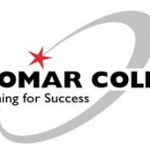- Domeniu: Education
- Number of terms: 12355
- Number of blossaries: 0
- Company Profile:
Founded in 1946, Palomar College is a public two-year community college in the city of San Marcos, located in north San Diego County, California. Palomar offers over 300 associate degree, certificate programs and is designated by the U.S. Department of Education as an Hispanic-Serving Institution ...
Any of two or more forms of an element that differ in terms of atomic mass but have the same atomic number--for example, carbon-12, carbon-13, and carbon-14 are all isotopes of carbon.
Industry:Anthropology
Any of several disorders in which one's antibodies attack his/her own body tissues. Lupus erythematosus, rheumatoid arthritis, and even common allergies are caused by such autoimmune reactions.
Industry:Anthropology
Any of a large number of organic molecules that are composed of one or more chains of amino acids. These chains are twisted and folded back on themselves in complex patterns. Proteins can serve a wide variety of functions through their ability to bind to other molecules. Proteins may be transporting molecules in blood, structural components, enzymes, hormones, antibodies, or neurotransmitters.
Industry:Anthropology
Anatomical structures in different species that are similar due to descent from a common ancestor that had them. Homologies are also referred to as homologous structures or features. See cladistics.
Industry:Anthropology
An organ in the uterus of a mammal that develops from the chorion of an embryo during gestation. The placenta is connected to an unborn child by the umbilical cord. The placenta provides oxygen, nutrients, and antibodies for a fetus. Following birth the placenta and umbilical cord are naturally expelled from the uterus as the "after birth. "
Industry:Anthropology
An inherited trait that is determined by genes at two or more loci. Simple Mendelian rules of dominance do not apply to the complex interaction of these genes. As a result, phenotypes may appear as apparent blends or intermediate expressions. Human skin and hair color are polygenic traits. Many polygenic traits are also influenced by environmental factors.
Industry:Anthropology
An inherited metabolic disorder in which there are abnormally high blood sugar levels. In advanced stages, this often results in blindness from cataracts, nerve damage, gangrene in the feet and legs leading to amputation, heart disease, and kidney failure. Type 1 diabetes melitis (juvenile onset diabetes) is due to decreased production of insulin by the pancreas. Type 2 diabetes melitis is due to increased resistance of cells in the body to insulin. The gene or genes for diabetes are incompletely penetrant.
Industry:Anthropology
An individual who has one or more testes and ovaries and whose external genitalia are not clearly male or female. This condition can occur in chimeras who have inherited both a male and a female set of sex chromosomes. True hermaphrodites have one testes and one ovary. Male pseudohermaphrodites, or "merms," have testes but no ovaries and display some female genitalia tissue. Female pseudohermaphrodites, or "ferms," have ovaries but no testes and display some male genitalia tissue.
Industry:Anthropology
An inadequacy or an excess of some key element(s) in the diet, such as proteins, fats, or specific minerals and vitamins. See undernourishment and overnourishment.
Industry:Anthropology
An impairment of vision caused by the lenses of the eyes becoming cloudy. Cataracts are common in elderly people. They may be inherited or caused by diabetes and environmental factors.
Industry:Anthropology
